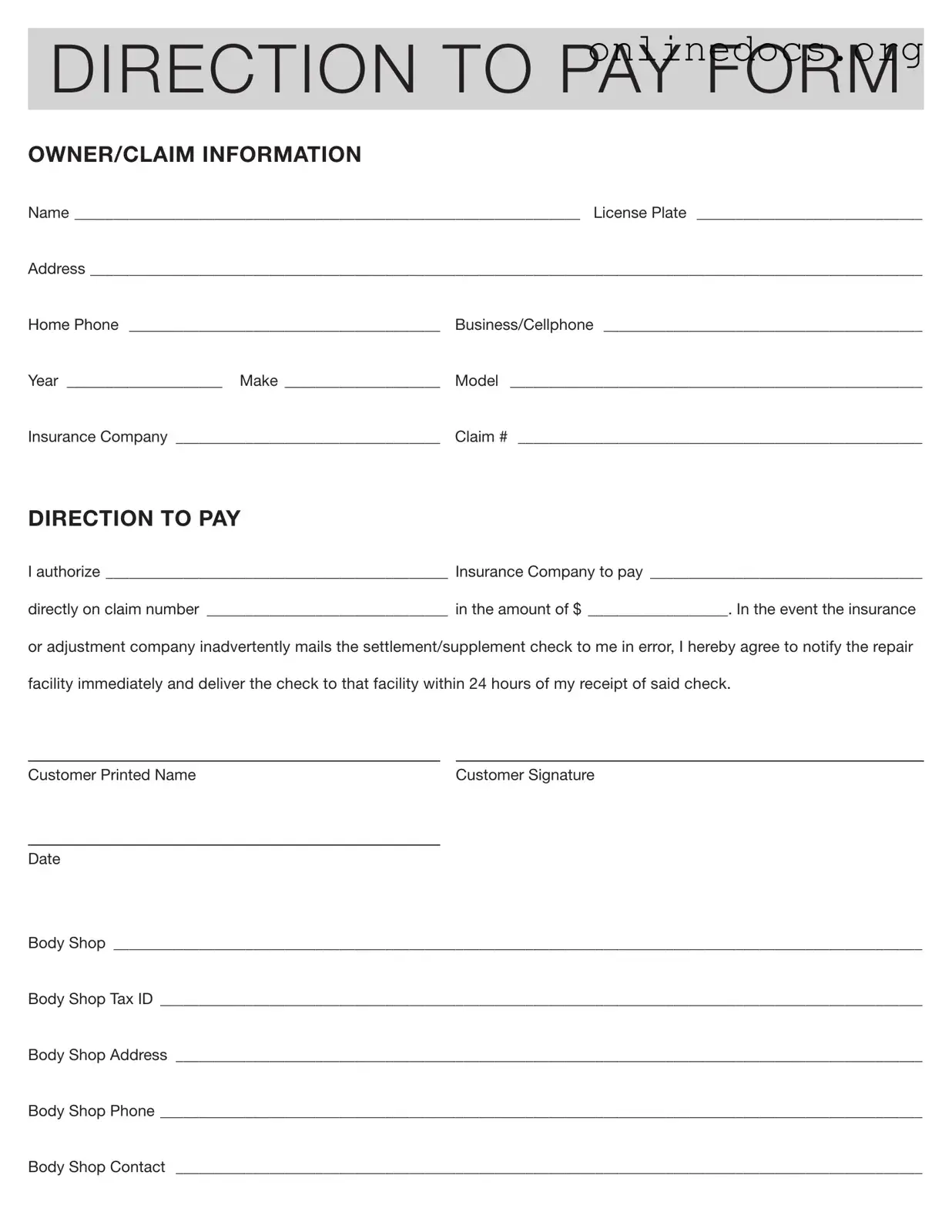The Assignment of Benefits form is similar to the Authorization and Direction Pay form in that it allows a policyholder to transfer their insurance benefits to a third party, such as a repair facility. This document requires the policyholder's consent, ensuring that the insurance company pays the designated provider directly. Both forms serve to streamline the payment process, reducing the need for the policyholder to handle the settlement check themselves.
The Direct Payment Authorization form also shares similarities with the Authorization and Direction Pay form. It permits a third party to receive payments directly from an insurance company. This document often includes details about the amount and purpose of the payment, mirroring the structure of the Authorization and Direction Pay form. Both documents emphasize the importance of clear communication between the insurer, the policyholder, and the designated recipient.
The Power of Attorney form can be compared to the Authorization and Direction Pay form in that it grants a designated individual the authority to act on behalf of another person. While the Authorization and Direction Pay form specifically addresses payment direction, the Power of Attorney can cover a broader range of financial matters. Both documents require the principal's consent and aim to facilitate transactions without unnecessary delays.
The Release of Information form is another document that aligns with the Authorization and Direction Pay form. It allows a policyholder to authorize the sharing of their personal and claim-related information with specific parties, including repair facilities or insurance adjusters. This form ensures that all parties involved have access to the necessary information to process claims efficiently, similar to how the Authorization and Direction Pay form facilitates direct payments.
The Claim Assignment form is akin to the Authorization and Direction Pay form as it allows a policyholder to assign their rights to claim payments to a third party. This document typically outlines the specific claims being assigned and requires the policyholder's signature. Both forms serve the purpose of ensuring that payments are made directly to the designated party, simplifying the claims process.
Understanding the intricacies of various forms is essential to ensure both parties involved in a transaction are protected and aware of their rights and obligations. One such important document is the California Notice to Quit form, which landlords must utilize to formally communicate the need for tenants to vacate a property. More information about this critical form can be found at https://californiapdfforms.com/notice-to-quit-form/.
Lastly, the Settlement Agreement form shares characteristics with the Authorization and Direction Pay form. It documents the terms of a settlement between the policyholder and the insurance company, including payment details. Both forms require the policyholder's acknowledgment and consent, ensuring clarity and agreement on the financial aspects of the claim. This helps to prevent misunderstandings and promotes a smooth resolution process.
